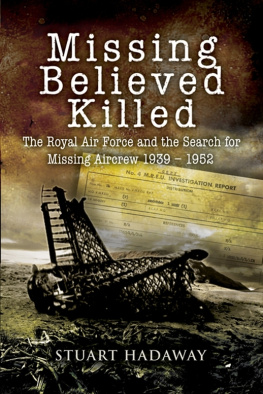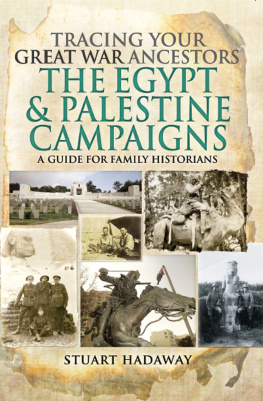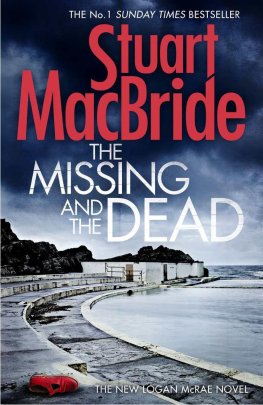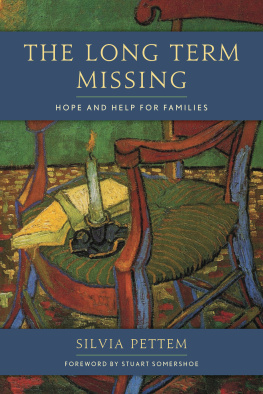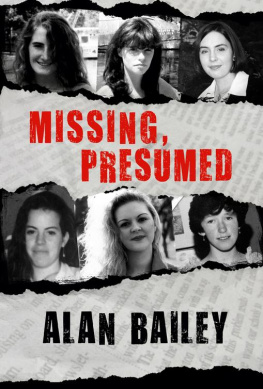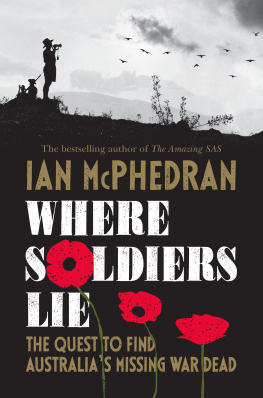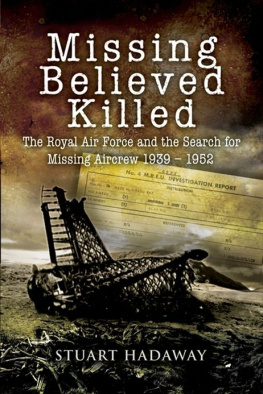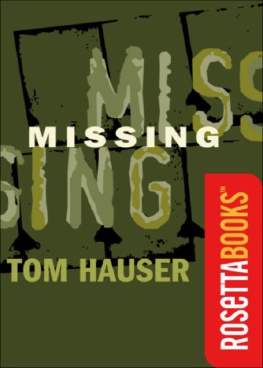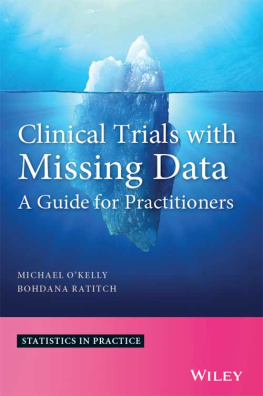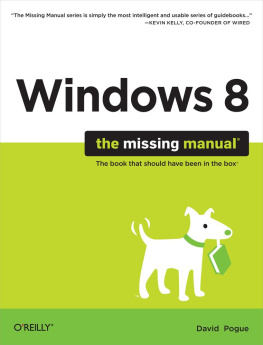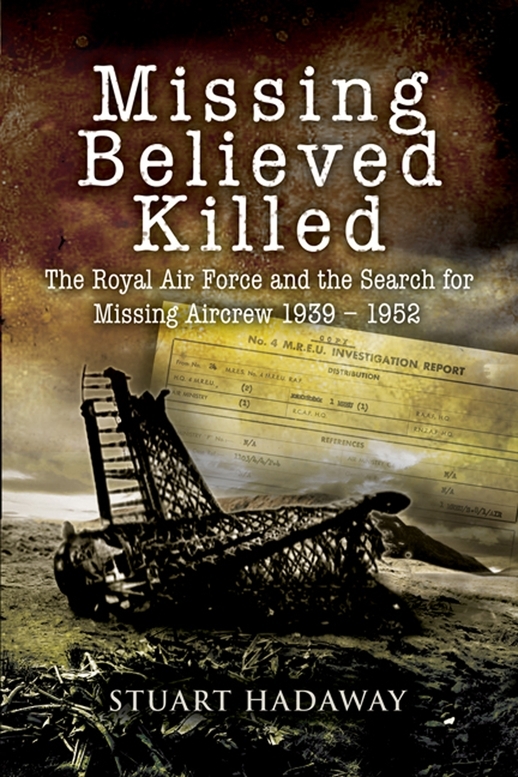Acknowledgements
T his book has not been the easiest to write, and there are many people without whom it simply would not have been possible. My father, David Hadaway, to whom this book is most respectfully dedicated, has been tireless in providing encouragement, information and advice at every turn. Kathleen Navarro de Paz has been a constant supporter and sounding board. David Bulldog Buttery, one of the best historians I know, whos endless advice and support has been invaluable, and Peter Devitt has aided me more than I can say.
Dr Lories Charlesworth provided encouragement and ideas beyond measure. Linzee Druce was instrumental in providing the leads needed to get this project off the ground. Ellen Soall provided moral support and proof reading. Doug Radcliffe of the Bomber Command Association-helped to trace so many veterans. The staff of the Air Historical Branch, especially Clive Richards and Graham Day, who provided some quite extraordinary sources. Matt Poole, who opened up the Far East for me, and Peter Hart of the Imperial War Museum for his help.
A special thanks must go to all of the staff of the RAF Museum, especially Peter Elliott, Nina Burls, Gordon Leith, Guy Revell, Daniel Scott-Davies and Ian Thirsk for all their practical and moral support and leads.
None of this would have been possible without all the veterans who have so very kindly allowed me access to their memories and papers of their most astonishing work:
Mrs Ann-Marie Archer
LACW Iris Catlin
Cpl Douglas Hague
Sgt David Harrap
WO James Kingham
Sqdn Ldr Bill Lott
Wg Cdr Bernard Moorcroft
Flt Lt Ronald Myhill
Wg Cdr Ray Sheppard
LACW Lillian Taylor
Sqdn Ldr Tommy Thompson
Flt Lt Roger St Vincent
Flt Lt Harry Wilson
And the MRES [Missing, Research and Enquiry Service] officer who asked to remain anonymous.
A further thank you must go to the various families who facilitated my contacts, most especially John Archer, who went above and beyond to provide access to the collection of his extraordinary father.
APPENDIX A
Casualty Statistics
O ne of the problems facing the MRES was the lack of accurate information on the exact numbers of personnel that they were looking for. This severely inhibited their ability to plan ahead, or set meaningful goals. In 1945, both Europe and the Far East were in chaos. Displaced persons wandered in their millions. Many prisoners of war had been moved from their established camps, where the international authorities had been able to monitor them, as the Allies had got closer. In Germany this had sparked the Long March over the winter of 1944-5, where extreme weather conditions, lack of adequate supplies, German reprisals and even Allied air actions had all taken their toll in lives. The Allies now had no idea where these men were, or what their status was. In Europe many were behind Russians lines, who were proving reticent in listing and returning those that they held. It would take months to sort out which prisoners were alive and who had died in the moves and confusion, or whether aircrew lost in the final weeks of the war had been taken prisoner at all.
On the same day, 9 August 1945, Air Marshal Sir John Slessor, Air Member for Personnel, wrote two letters. The first, to Air Marshal Sir G. Johnson at HQ RCAF, estimated the missing toll to be 20,000 men.
The break down of missing personnel in proportions, which influenced the initial make of the MRES units was:
| RAF | 69 per cent |
| RAAF | 7 per cent |
| RCAF | 17 per cent |
| RNZAF | 3 per cent |
| Allied | 4 per cent |
Perhaps because of the distances involved, the Far East was usually counted separately. In February 1946, the situation was stated as:
Only in late 1947 did clear figures begin to emerge. By now the vast majority of prisoners of war had been accounted for and brought home, and the list of the missing solidified. In October, Squadron Leader Sinkinson of the MRS reported to the Air Minister for Personnel that there were 42,000 personnel missing in all theatres, 37,000 of them in Europe. So far 16,000 had been traced in all theatres (15,200 in Europe) and 17,000 (40 per cent) were now presumed lost at sea. This left a nominal 9,000 still either unidentified or not yet found, of whom 8,400 were in Europe.
By 1949 the figures had been agreed upon. The final accepted number of RAF personnel missing at the end of the Second World War was 41,881 world-wide. By January 1951, when the Air Ministrys search operations were scaling down and grinding to a halt, the figures stood at:
| Missing at cessation of hostilities | 41,881 |
| Accounted for (known burials) | 23,881 |
| Formally lost at sea | 9,281 |
| No information | 6,745 |
This somehow left 1,974 personnel totally unaccounted for in the statistics, possibly bodies buried as unknown airmen, but they still stand as the most complete set extant to symbolise the achievements of the MRES.
In 1953 the Runneymede Memorial was opened to commemorate those RAF airmen and women who had no known graves. The list was not comprehensive, the Polish Air Force having its own memorial at Northolt, and further memorials for the missing of different theatres built elsewhere. Also, it has not been kept up to date. Even while it was being built, nine of the listed missing were found. Many more have been found since, although no accurate record of how many has been kept. The following list shows a breakdown of those listed:
| RAF | 15,462 |
| WAAF | 10 |
| RCAF | 3,050 |
| RAAF | 1,397 |
| RNZAF | 576 |
| SAAF | 17 |
| RIAF | 7 |
| ATC | 4 |
| ATA | 8 |
| BOAC | 7 |
| Ferry Command | 9 |
| Total | 20,547 |
APPENDIX B
Chronology and Organisation of Units
Original Search Sections:
| Unit | Date | Event |
|---|
| No. 1 Section | December 1944 | Established by Casualty Branch Air Ministry, and sent to France (Paris). |
| No. 2 Section | May 1945 | Established in Belgium (Brussels). |
| No. 3 (Mobile) Section | June 1945 | Established to sweep France. |
| No. 4 (Mobile) Section | June 1945 | Established to sweep France. |
| No. 5 Section | July 1945 | Established in Holland (The Hague). |
| No. 6 Section | July 1945 | Established in Norway (Oslo). |
| No. 7 Section | August 1945 | Established in Denmark (Esbjerg). |
| No. 8 Section | August 1945 | Established in Germany (Bunde). |
15th July: Decided to reorganise (SD155/1945/2044) under 28 Group, Technical Training Command as:
| Unit | Date | Areas |
|---|
| 1 MREU | August 1945 | France and Luxembourg. HQ Le Mans. Task: Search Dunkerque to Brest, inc. all Departments. |

